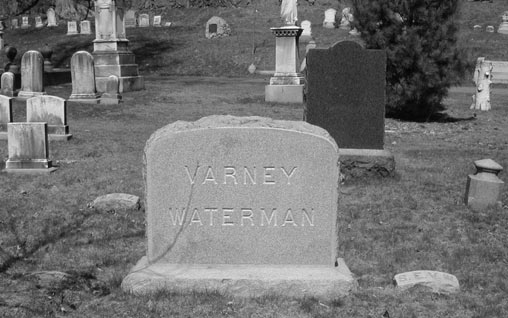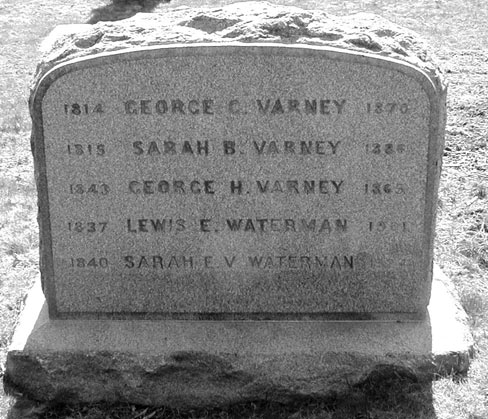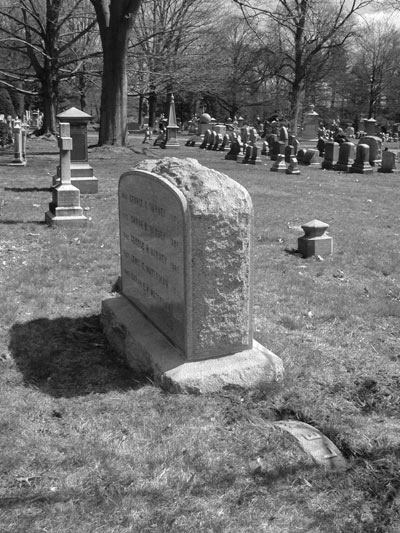|
[The PENnant Summer 2002] Among the founding fathers of the American fountain pen industry, no one stands taller than Lewis Edson Waterman (1837-1901). Yet as with so many near-mythic figures, the legendary Waterman has almost completely overshadowed Waterman the man. Nearly every pen collector knows the old and almost certainly apocryphal tale of Waterman and the ink blot. (1) Yet how many have sought to look beyond the fanciful posthumous hagiographies to ask where and how he lived; who his friends were; what his other interests might have been; and even, where he was buried? Though these questions have been on my mind for some years, I have only recently begun to tackle them in earnest. To start off this project, I made a visit this past April to L.E.W. himself. Strange to say, pen collectors seem entirely unaware of where the Waterman gravesite lies. It should be no mystery, for it is mentioned in both contemporary obituaries and older biographical dictionaries. (2) Though one might expect a site in New York for a man who had lived the last 20-odd years of his life in Brooklyn, Waterman was in fact laid to rest just outside Boston, in Forest Hills Cemetery in Jamaica Plain, Massachusetts.
A rather prestigious graveyard, Forest Hills is still beautifully maintained. A guidebook is available which lists the luminaries interred there, Waterman included. The plot where Waterman lies is not far from the entrance; there is a central headstone, around which lie five small stone markers set into the turf (Fig. 1, above). This was the family plot of Waterman's widow, Sarah E. V. Waterman, which had been purchased in 1871 by her mother, Mrs. Sarah B. Varney. The headstone is rather simple and severe; on one side are carved the names Varney and Waterman, and on the other, the names and dates of the site's occupants (Fig. 2, below). The headstone must have been commissioned by Sarah E. V. Waterman at some time between her husband's death in 1901 and her own in 1924. The individual burial markers are quite small and simple, and bear only initials. L.E. Waterman's is visible in the right foreground of Fig. 3, at bottom.
Although the visit dashed any hopes of finding an elaborate pen-shaped monument, the understated nature of the site was a salutary reminder that this was the resting place of a real person, who undoubtedly saw himself very differently from how we are accustomed to see him. Indeed, there is much in Waterman's obituaries that is unfamiliar to those who know him primarily through the publications of the company he founded. That, however, will have to await another article .
1. David Nishimura, " Waterman's Ink Blot: More on the Birth of a Myth ", The PENnant, XIII/2 (Fall 1999), p. 23. 2. e.g., Dictionary of American Biography (New York, 1936); Who Was Who in America (Chicago, 1963). Copyright © 2002 David Nishimura. All rights reserved. |


